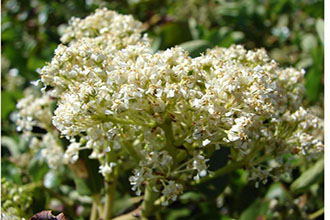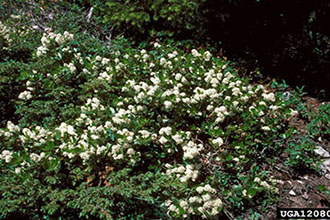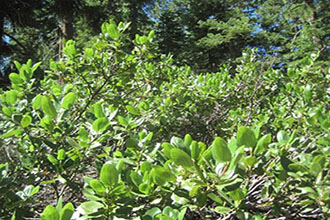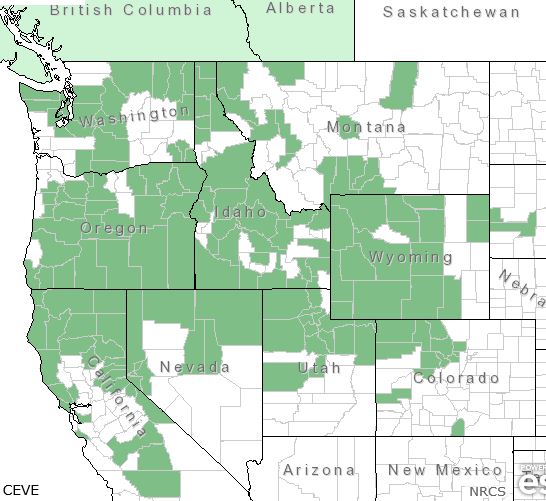Taxonomy: Kingdom - Plantae (plants). Subkingdom - Tracheobionta (vascular plants). Superdivsion - Spermatophyta (seed plants). Division - Magnoliophyta (flowering plants). Class - Magnoliopsida (dicotyledons). Subclass - Rosidae. Order - Rhamnales. Family - Rhamnaceae (buckthorn). Genus - Ceanothus L. ( Ceanothus). Species - Ceanothus velutinus Douglas ex Hook. (snowbrush ceanothus).
Ecology: Though stands of snowbrush ceanothus may begin to deteriorate after 15 years, the natural life span of snowbrush ceanothus is greater than 25 years. Snowbrush ceanothus is an early to mid-seral species. It invades recently disturbed sites, particularly burned sites.Snowbrush ceanothus has been described as moderately shade tolerant to very intolerant: It grows on open, sunny sitesand in wooded areas. Though snowbrush ceanothus occurs as an understory species, it is soon shaded out with increasing development of tree cover. Snowbrush ceanothus is generally considered an important early to mid-seral species in most Douglas-fir forests of the northern Rockies and Pacific Northwest.



